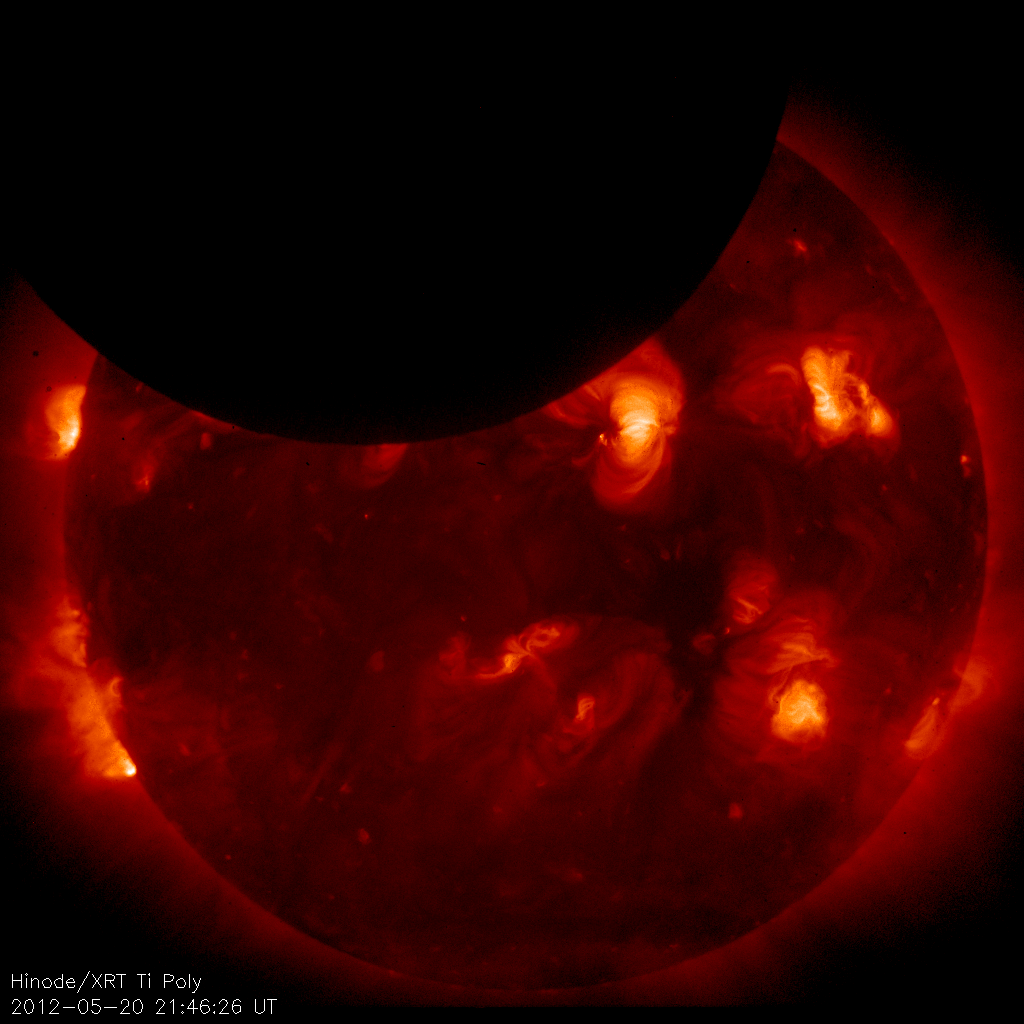
Eclipse: One. Two (G-band!). Three. Four. Click image for all.
Also available on YouTube
Solar Eclipse of May 20th, 2012
|
An annular solar eclipse took place in the late hours of May 20th, into the 21st, and was visible from the ground in southern China, Japan, and the western United States. Annular eclipses occur when the Moon appears smaller on the sky than the Sun, such that a ring, or annulus, of solar surface remains visible. Since the Moon's orbit is elliptical, its apparent diameter changes throughout the month, and thus how much of the Sun can be blocked during an eclipse depends on where the Moon is in its orbit. During the second solar eclipse of 2012 on November 13th, the Moon will be near its closest approach to Earth, so observers in Australia and the South Pacific will be treated to a total eclipse. Of course, the perfect alignment of observer, Moon, and Sun only happens over a narrow stretch of Earth's surface. A much larger swath has a less-than-perfect vantage point and sees the eclipse as only partial. Such was the case for Hinode's view in orbit. Though it didn't afford an annular view, the ever-changing position of the satellite resulted in four separate eclipses this time, each with a somewhat different perspective due to parallax. And for a change of pace from our previous eclipse movies, the second contact was observed using XRT's visible light filter! [Update: The image and movies have been updated to incorporate a short exposure taken before each eclipse. Each frame is now a composite of the original and that first short exposure, allowing us to see extended structures without the active region cores being saturated. The original movies can be downloaded here: One. Two. Three. Four. All.] Keywords: Eclipse, Full Disk, Visible Light Filters: Ti_poly, G-band |
(Submitted by Patrick McCauley, David McKenzie, & Hideaki Tonooka)
| Back | Archive | Next |